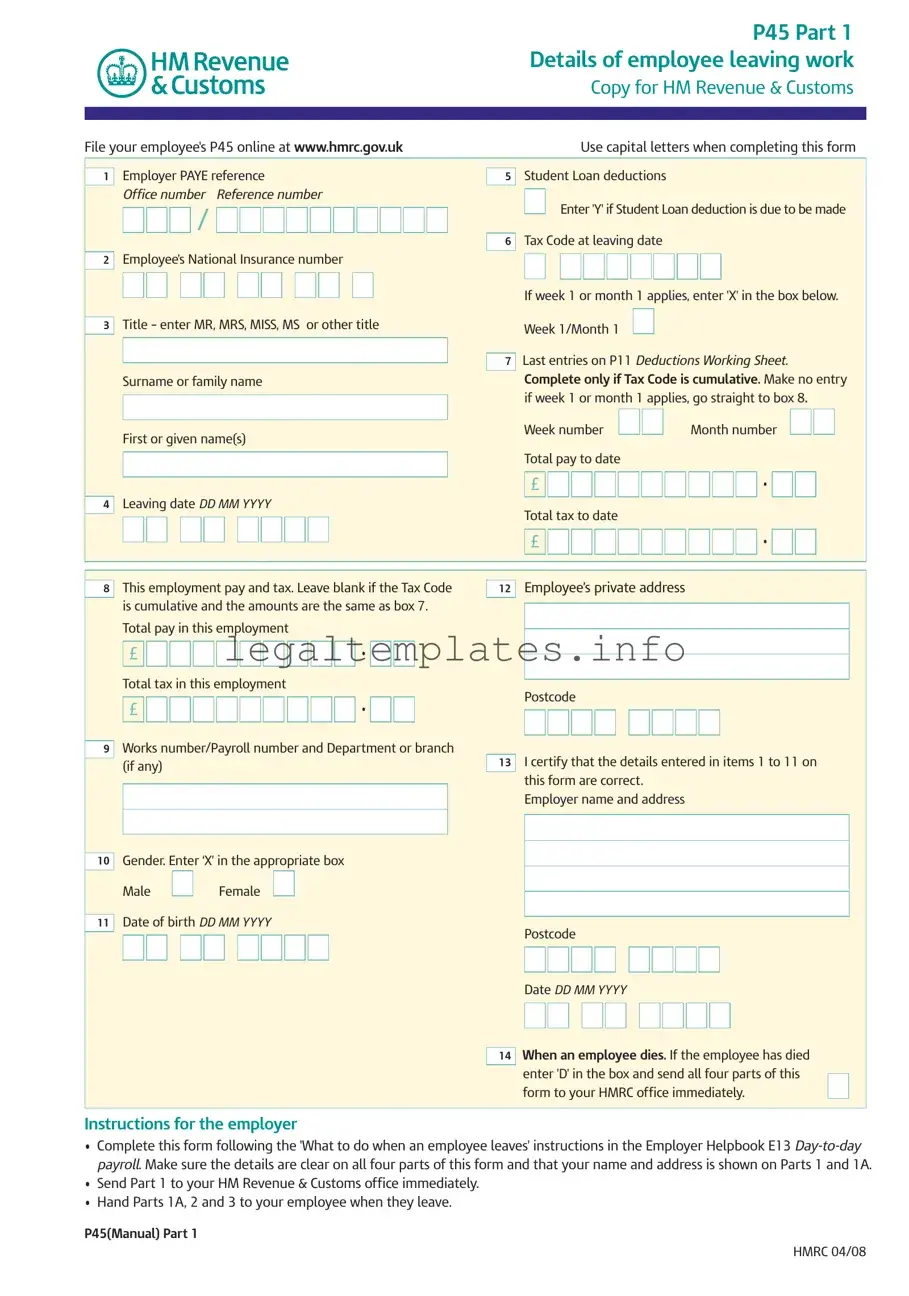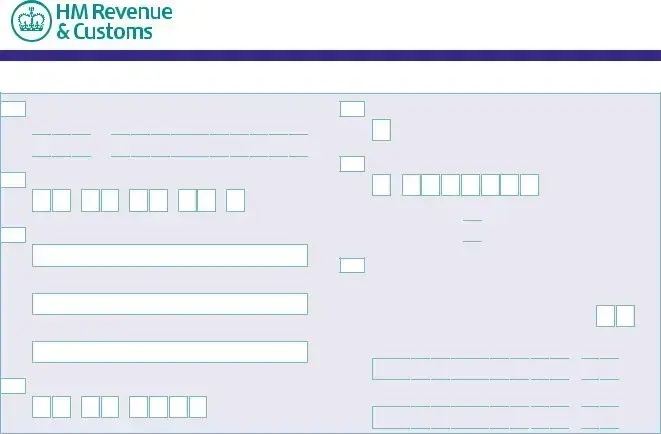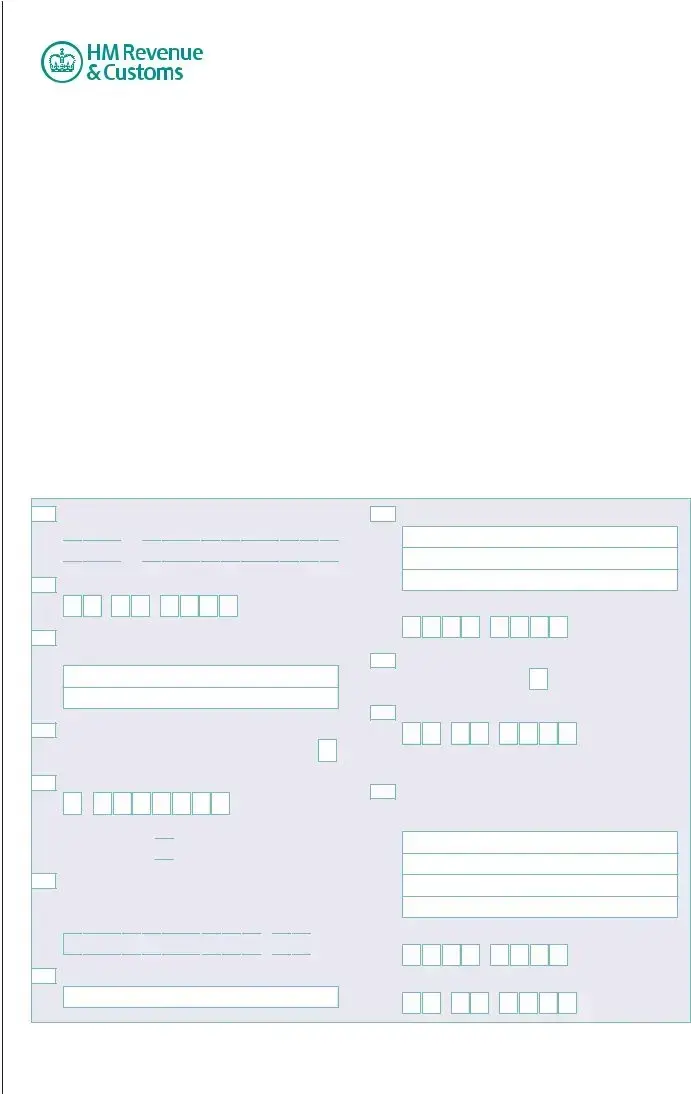The W-2 Form, officially known as the Wage and Tax Statement, shares similarities with the P45 in that it provides details about an employee's income and taxes deducted during employment. Both documents are essential for tax filing purposes. The W-2 is used in the United States to report wages paid to employees and the taxes withheld from them, much like the P45 reports an employee's pay and taxes up to the point of leaving their job in the U.K.
The 1099-MISC Form, used in the U.S. for reporting payments made to freelancers and independent contractors, compares to the P45 by serving a similar tax-reporting function, albeit for different employment types. Like the P45, which is used by those in traditional employment when they leave a job, the 1099-MISC captures income details necessary for tax purposes, but for those not directly employed by a company.
The P60 Form is a close relation to the P45 within the U.K. tax system, summarizing an employee's total pay and deductions for the year. While the P45 is given to employees when they leave a job, the P60 is provided at the end of the tax year for current employees. Both forms are crucial for ensuring accurate income tax records and calculations.
Form P11D in the U.K. records expenses and benefits provided to employees and directors, sharing a commonality with the P45 in its role of documenting financial information related to employment. Whereas the P45 focuses on salary and tax paid up to employment termination, the P11D captures additional perks, influencing tax liabilities.
The New Hire Reporting Form, mandatory in the U.S., is akin to the P45 in its employment-change context, although from an opposite starting point. It's used by employers to report new or rehired employees to a state directory, facilitating child support enforcement, quite different from the P45's role in marking the end of an employment relationship.
Form I-9, the Employment Eligibility Verification in the U.S., while serving a distinct purpose from the P45, overlaps in its employment lifecycle relevance. The I-9 verifies an employee's legal right to work in the U.S., necessary at the beginning of employment, as opposed to the P45, which is issued when employment concludes.
The P46 Form, now replaced by the starter checklist in the U.K., was initially used for new employees without a P45. This form's intent closely aligns with the P45 by focusing on tax details at the start of employment, ensuring correct tax codes are applied, just as the P45 ensures correct final tax calculations.
The Employment and Support Allowance (ESA) forms in the U.K., specially designed for individuals unable to work due to illness or disability, intersect with the P45 contextually. Post-employment, the P45 aids in tax matters, while the ESA helps individuals sustain themselves financially when employment is not an option.
The P50 Form, used by individuals to claim tax refunds in the U.K. after employment has ended and if they are not working, complements the P45. The P45 provides necessary employment and tax details that help in filling out the P50, demonstrating their interconnected roles in managing tax affairs post-employment.
Lastly, the TC600 Form, for claiming Tax Credits in the U.K., while not directly linked to employment termination like the P45, still connects in terms of financial changes. Both forms play roles in adjusting to changing financial circumstances, with the P45 marking employment end and the TC600 aiding in securing financial support through tax credits.









 /
/ 







































 •
• 





















 •
• 









 /
/ 







































 •
• 


